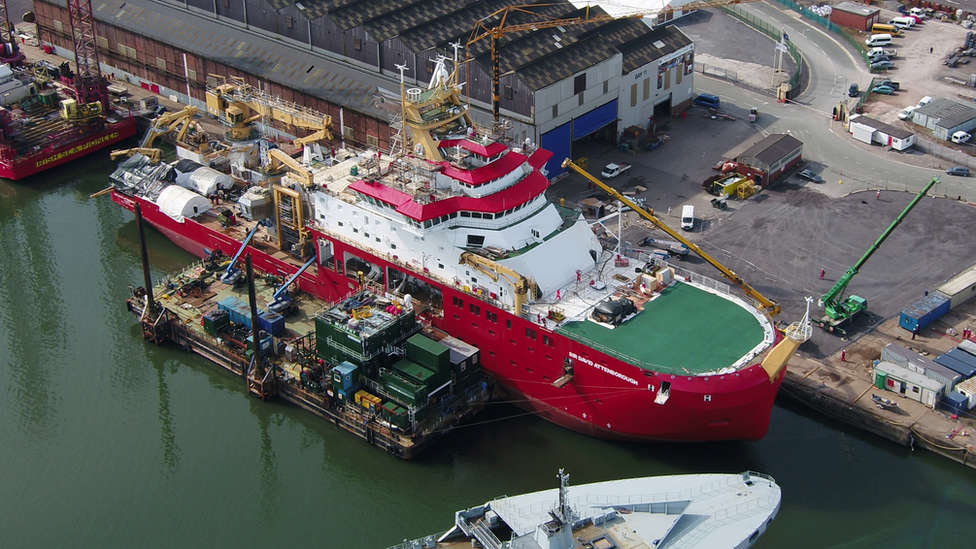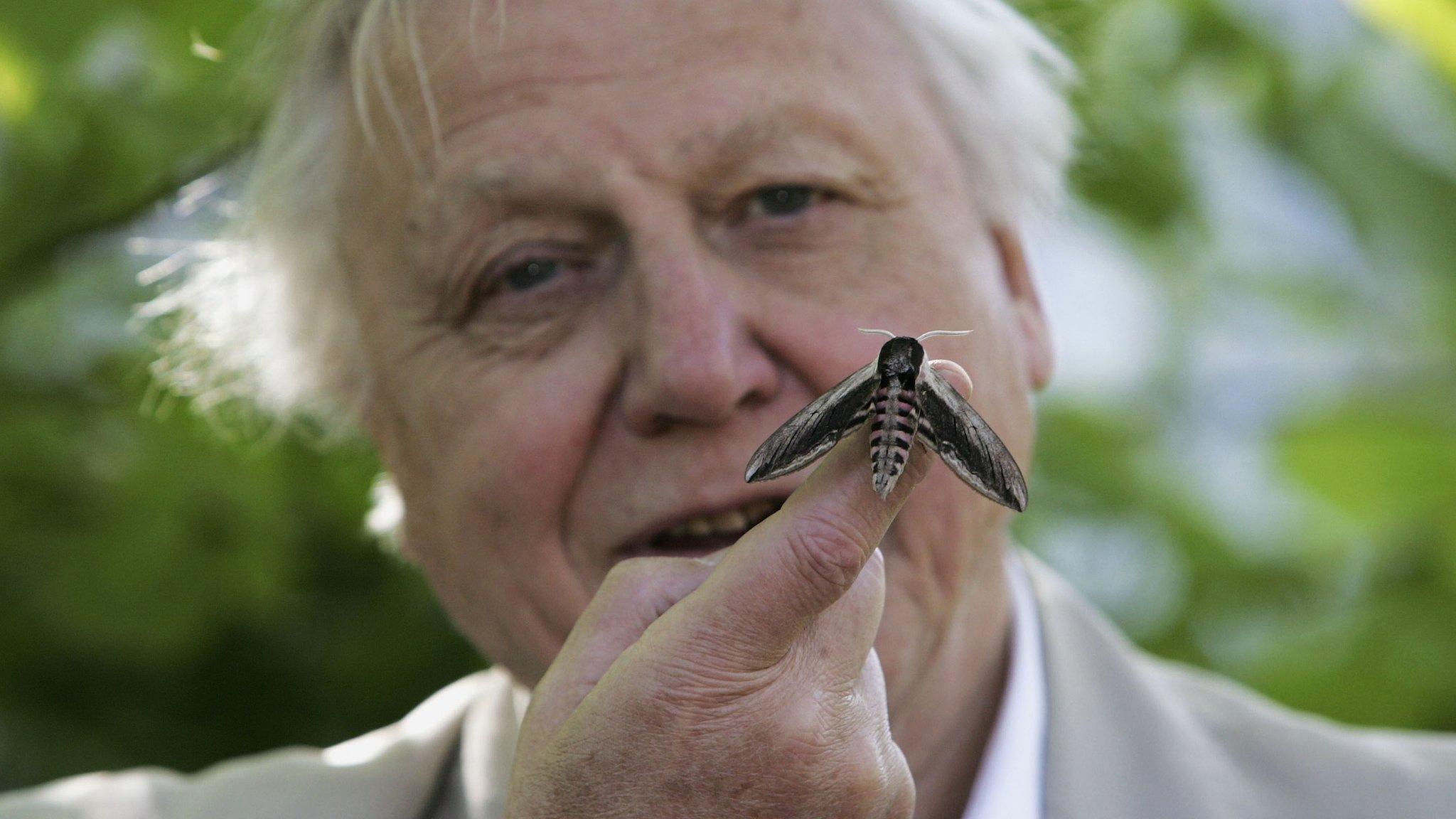Royal naming for David Attenborough polar ship
- Published
- comments

The Duke and Duchess of Cambridge will officially name the UK's new polar research ship on 26 September.
The RRS Sir David Attenborough, which was almost named Boaty McBoatface in a public poll, was named after the popular naturalist known for his work on programmes like Blue Planet.
Ceremonial naming of a ship is usually done by smashing a champagne bottle against the side of the vessel before it is officially launched for the first time.
As well as William and Kate, Sir David Attenborough himself will be at the ceremony.
The environmentalist has said the ship's name is the 'greatest possible honour'.
What will the ship do?

The ship was designed by the British Antarctic Survey, a group of scientists who specialise in polar exploration.
Costing £200 million, building the ship was the largest amount of money spent on polar science research in three decades.
It will carry 60 scientists and will be the first polar research ship to include a helipad - big enough to fit two helicopters on it.
Importantly for a polar research ship, it can break through ice. It can plough through 1m-thick sea ice at three knots which is 3.5 miles an hour.
It has an enclosed "moon pool" which is a huge hole in the middle of the ship. This will be used to lower scientific instruments into the water.
It's also really quiet so that sea creatures won't be scared off and the scientists on board will be able to study them.
What about Boaty McBoatface?
Submarine Boaty McBoatface has made its first trip
The name Boaty McBoatface topped an online poll to find a name for the royal research ship, but a panel of experts decided RRS David Attenborough would be a better option.
The name Boaty McBoatFace does live on in the form of the yellow submarine which will be on board the ship.
The submarine will be able to go into places the ship itself cannot reach, like the huge floating ice shelves that surround Antarctica.
- Published1 July 2019

- Published13 May 2019

- Published8 May 2019

